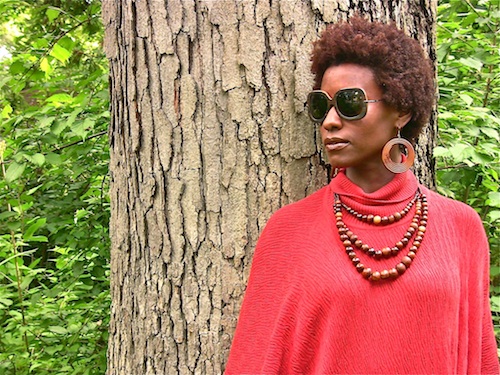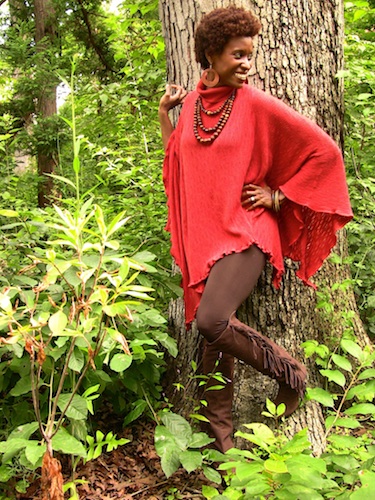The True Cost of Fast Fashion: Balancing the Scales
By Bianca Alexander
According to the Department of Labor, over half of the garment factories in the United States are sweatshops. The popularity of sweatshops began at the turn of the 20th century, as consumer demand rose for trendy but inexpensive off-the-rack clothing. Given the difficulty of mechanizing the clothing manufacture process, cheap human labor was needed to produce more garments by hand. As the number of clothing factories increased exponentially worldwide, competition increased. Manufacturers reacted by gradually outsourcing production globally to countries like Asia for low-wage, union-free “sweatshop” contractors, allowing them to cut costs and increase profits at the expense of human labor.
Casualties of Cheap Fashion: People and the Planet
Some of the worst sweatshop offenders in the U.S. are companies like H & M, Forever 21, The Gap, Nike and Guess, who offer disposable, “fast fashion” at a bargain for consumers bound to ever-changing style trends. Along with other big box and designer brands, these companies employ millions of contract laborers around the world.
Most sweatshop workers earn below minimum wage. This amount provides only half of what is needed to provide for their basic nutrition, clothing and shelter, education and transportation. Mistreatment is common. Away from the watchful eye of union representatives or law enforcement personnel, physical and sexual abuse at the hands of employers is rampant. Since women and children represent the cheapest, most disempowered portion of the sweatshop work force, more often than not, they are the primary victims of these abuses.
In addition, employees are often subjected to physically debilitating quota systems, long hours and unsafe, toxic working conditions. This year, these abuses are taking center stage with sweatshop tragedies in Dhaka, Bangladesh, including a garment warehouse collapse at Rana Plaza killing 1,129 and injuring 2,515 workers, and a fire just outside of Dhaka in Gazipur killing nine. Despite the fact that Bangladesh houses the third biggest garment industry in the world—worth over $20 billion--brands like Walmart and H & M continue to fall short of demands to pay its workers minimum wage and ensure safe working conditions.
In addition to hurting people, fast fashion is devastating to the environment. According to the EPA, the textile industry is one of the biggest sources of greenhouse gases and pollution. Each step required to make a garment (including spinning, weaving, dyeing and printing) consumes vast amounts of water and chemicals. In addition, traditional garment manufacturing releases numerous volatile organic compounds into the earth, water and atmosphere.
Balancing the Scales: Fair Trade Fashion
According to the Fair Trade Federation, Fair Trade is a system of just exchange that honors producers, communities, consumers, and the environment. This is done through several key initiatives:
- Support of small scale artisans
- Fair, safe labor conditions
- Payment of a living wage
- Direct, accountable trade with producers
- Gender equality and no child labor
- Community development and reinvestment
- Democratic, transparent co-operative organizations
- Building capacity through education and best practices
- Environmental sustainability
- Respect for cultural diversity and heritage.
With rising awareness about injustices in the garment industry, consumer interest in ethically sourced fashion is on the rise. In fact, the market for fair trade products has grown to over $1 billion annually. Socially responsible companies like Indigenous Designs, one of the most popular certified fair trade clothing brands on the market, are supplying the demand. CEO Scott Leonard, his business partner Matt Reynolds and a team of indigenous artisans are helping turn “fashionistas into passionistas” by empowering them to “wear their commitment to people and the planet on their sleeves—without sacrificing style.” Through their company, a certified B (for benefit) Corporation, they produce beautiful hand-knit dresses, sweaters and separates made by artisans in Peru from natural fibers, including alpaca, peace silk, merino wool and organic cotton.

Fair Trade organic wool poncho, Indigenous Designs. Reclaimed wood sunglasses, iwood. Fair trade recycled wood jewelry, World Finds.
Building a successful design house is just a part of how Indigenous is helping to pioneer the fair trade fashion movement. In response to the recent tragedies in Bangladesh, Indigenous created a Fair Trace Tool for consumers. Developed collaboratively by Indigenous and Worldways Social Marketing, the tool is a simple technology that links consumers with the artisans, farmers and laborers who produce the goods they consume every day. By scanning a Quick-Response (QR) code on the tag of each garment, the consumer can connect to the maker of the product, view their story in a video, see the supply chain maps and access social impact data collected directly from the artisans themselves.
It’s hard to tell what the long-term impact the tool will have on the garment industry. For now, it brings artisans' and farmers' stories to the consumer at the point of purchase, putting a face behind the label and increasing the demand for ethically made fashion. If enough consumers demand this level of transparency behind the clothes they wear, tragedies like Dhaka will soon be obsolete.

Fair Trade organic wool poncho, Indigenous Designs. Vegan fringe boots, Cri de Coeur. Photos, Michael Alexander.
Bianca Alexander, Esq. is an ethical fashion advocate and the Creative Director + Host of Conscious Living, a digital series covering the people, places and pioneers on the front lines of sustainability. Read more about the latest in ethical fashion and design on the style page of Conscious Living TV.
@ConsciousTV
Sign up for our free monthly newsletter!
Welcome to
Ethical Fashion SOURCE Network
© 2025 Created by Ethical Fashion Forum.
Powered by
![]()
You need to be a member of Ethical Fashion SOURCE Network to add comments!
Join Ethical Fashion SOURCE Network